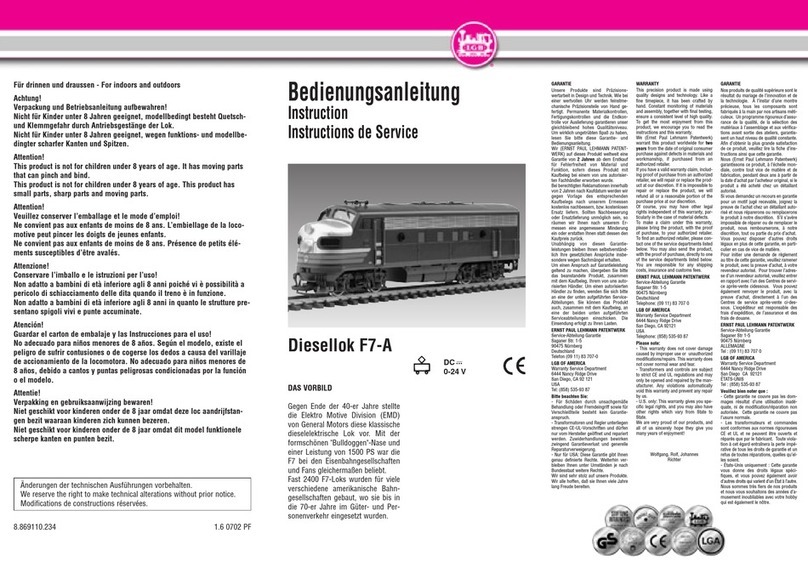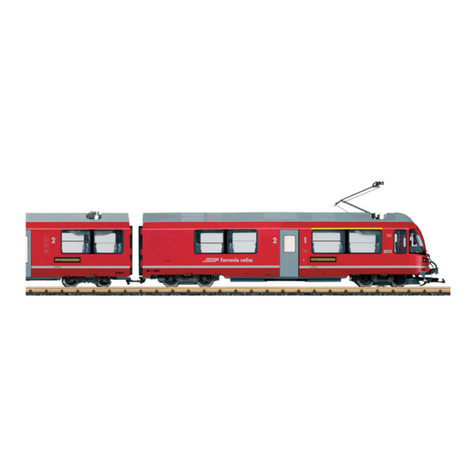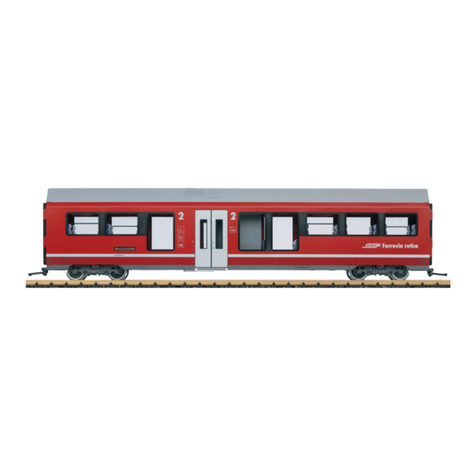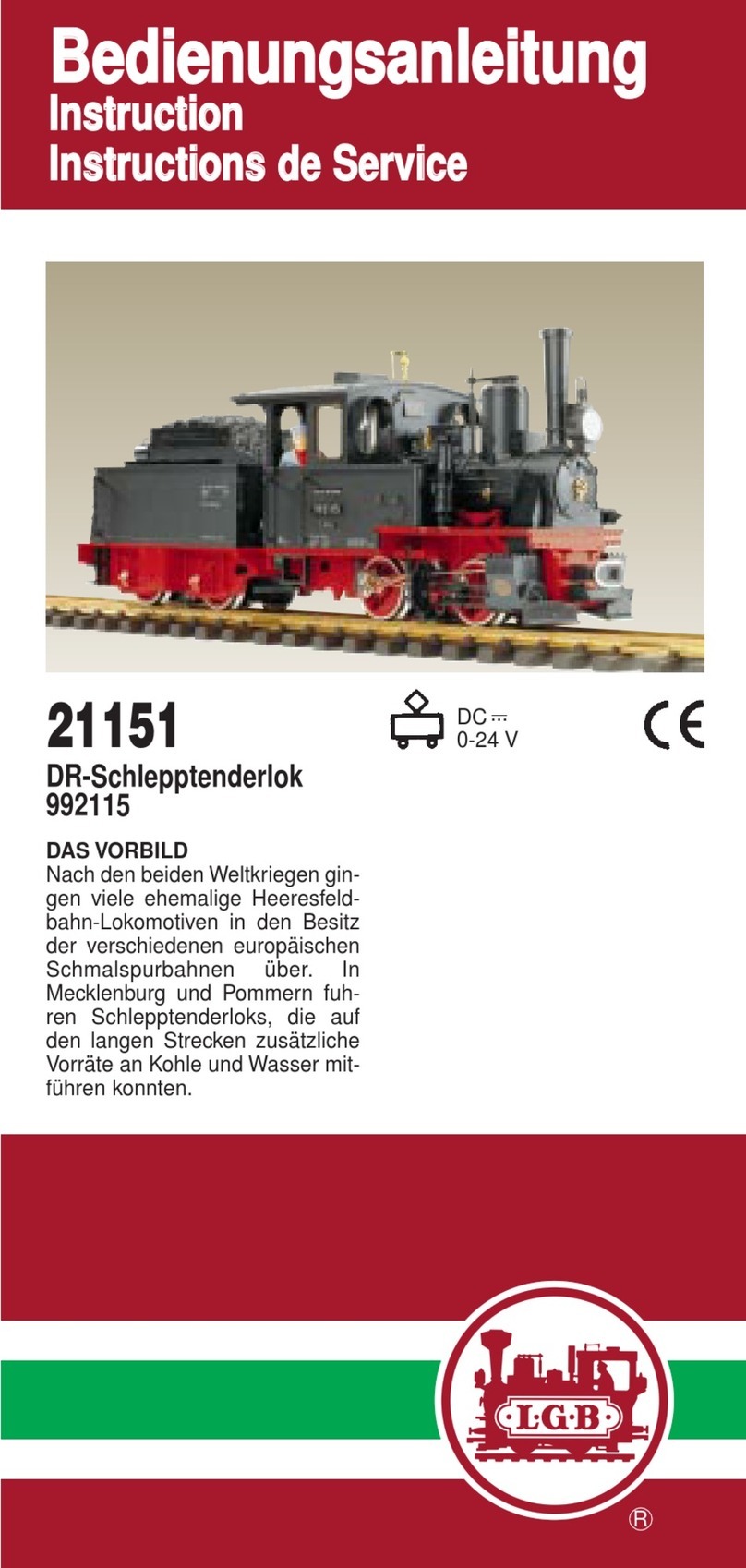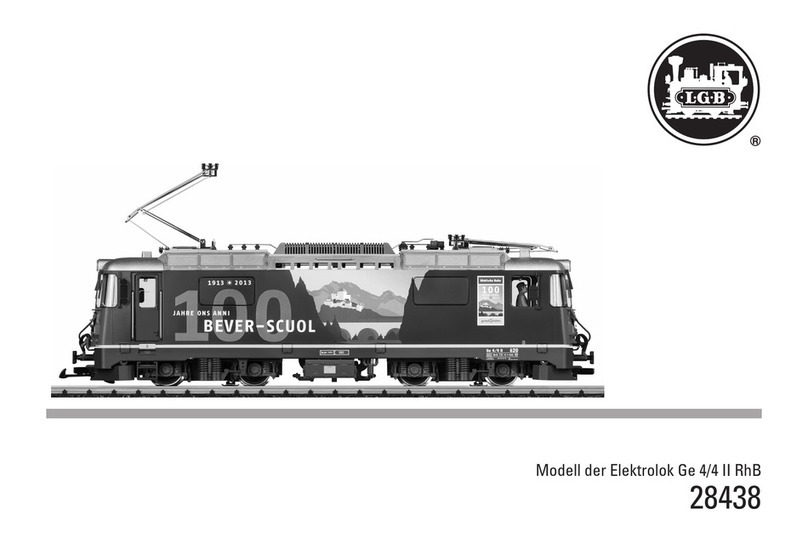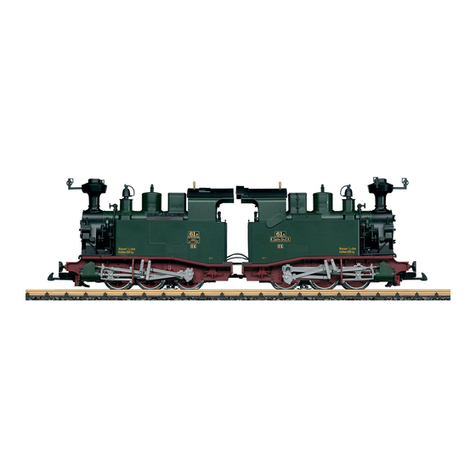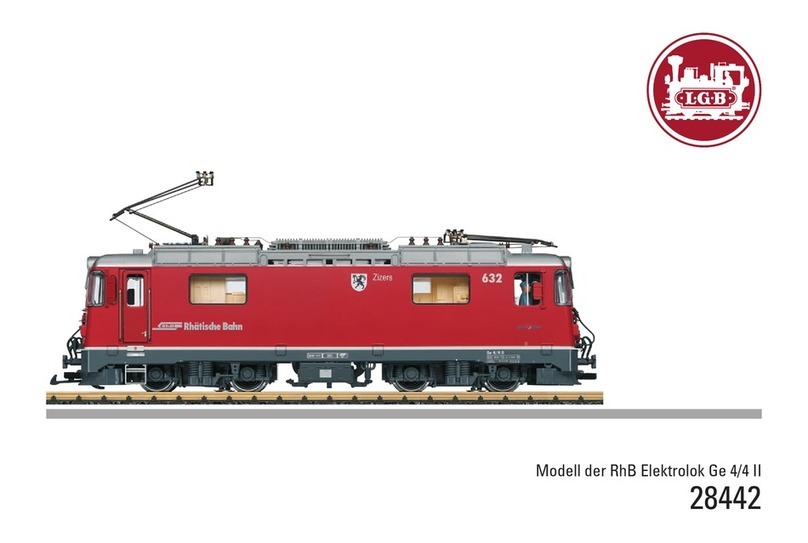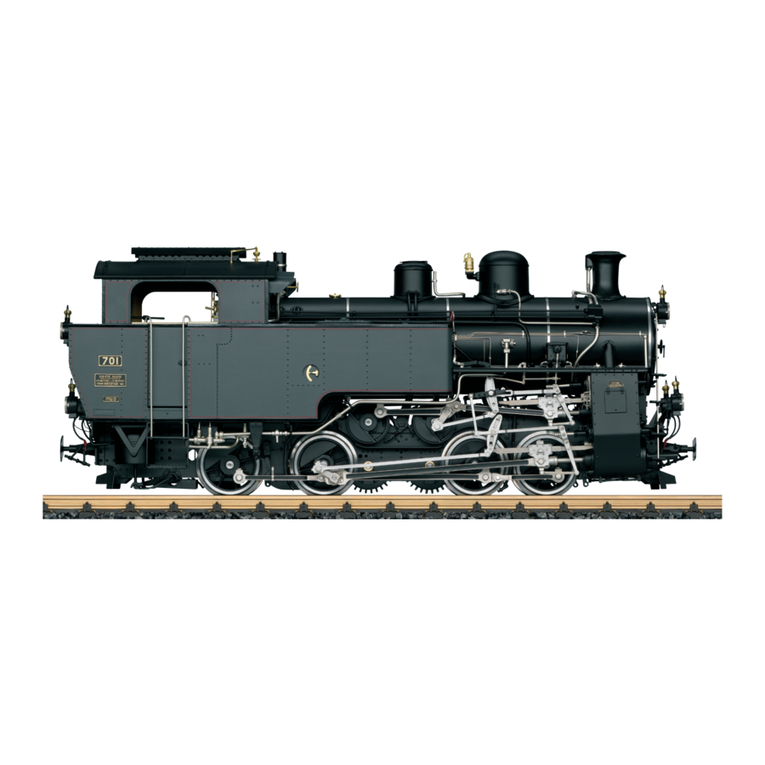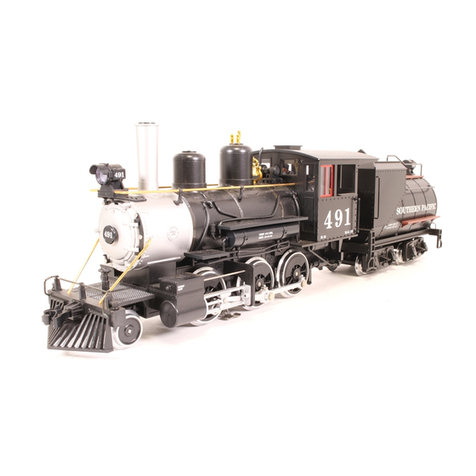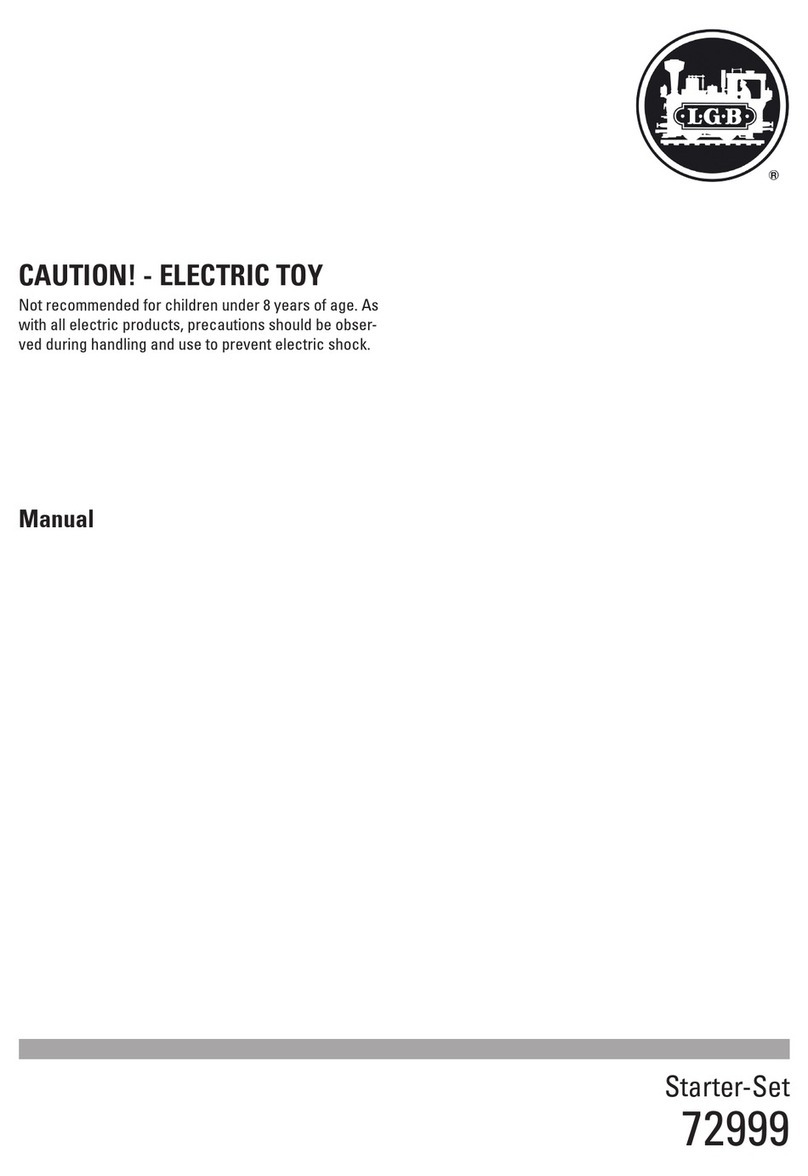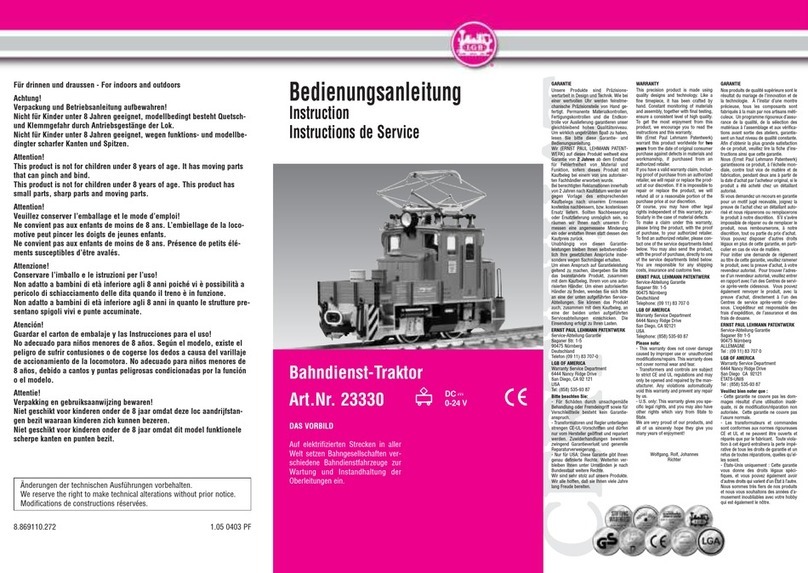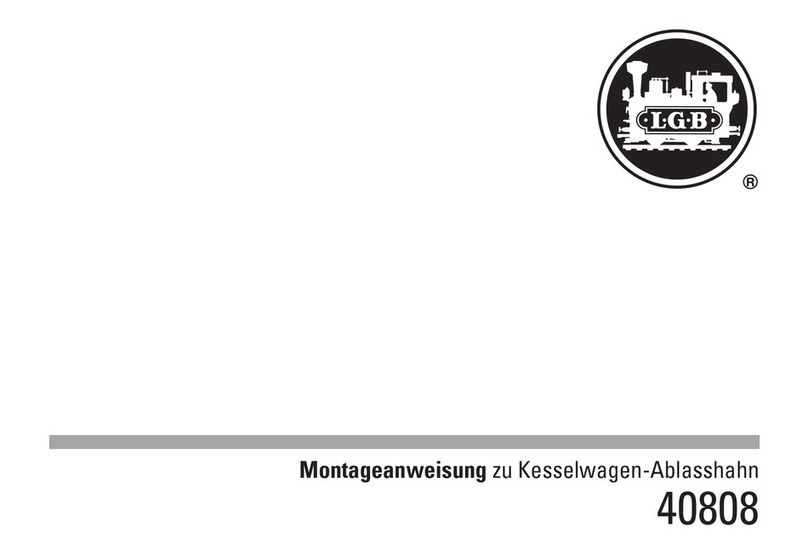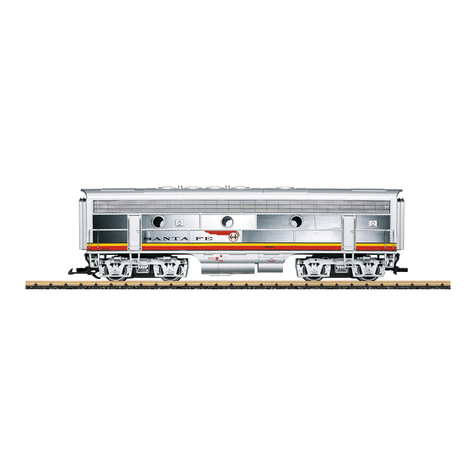
4
Sicherheitshinweise
• Das Modell darf nur mit einem dafür bestimmten
Betriebssystem eingesetzt werden.
• Nur Schaltnetzteile und Transformatoren verwenden,
die Ihrer örtlichen Netzspannung entsprechen.
• Das Modell darf nur aus einer Leistungsquelle versorgt werden.
• Beachten Sie unbedingt die Sicherheitshinweise in der Bedienungsanleitung zu
Ihrem Betriebssystem.
• Nicht für Kinder unter 15 Jahren.
• Verbaute LED`s entsprechen der Laserklasse 1 nach Norm EN 60825-1.
• ACHTUNG! Funktionsbedingte scharfe Kanten und Spitzen.
Wichtige Hinweise
• Die Bedienungsanleitung ist Bestandteil des Produktes und muss deshalb aufbe-
wahrt sowie bei Weitergabe des Produktes mitgegeben werden.
• Gewährleistung und Garantie gemäß der beiliegenden Garantieurkunde.
• Für Reparaturen oder Ersatzteile wenden Sie sich bitte an Ihren LGB-Fachhändler.
• Entsorgung: www.maerklin.com/en/imprint.html
Funktionen
• Das Modell ist für den Betrieb auf LGB-Zweileiter-Gleichstrom-Systemen mit
herkömmlichen LGB-Gleichstrom-Fahrpulten vorgesehen (DC, 0 - 24 V).
• Werkseitig eingebauter Multiprotokoll-Decoder (DC, DCC, mfx).
• Zum Einsatz mit dem LGB-Mehrzugsystem (DCC) ist das Modell auf Lokadresse 03
programmiert. Im Betrieb mit mfx wird die Lok automatisch erkannt.
• Im Analogbetrieb ist das Betriebsgeräusch an.
• Die Funktionen können nur parallel aufgerufen werden. Die serielle Funktionsaus-
lösung ist nicht möglich (beachten Sie hierzu die Anleitung zu Ihrem Steuergerät).
Allgemeiner Hinweis zur Vermeidung elektromagnetischer Störungen:
Um den bestimmungsgemäßen Betrieb zu gewährleisten, ist ein permanenter, ein-
wandfreier Rad-Schiene-Kontakt der Fahrzeuge erforderlich.
Führen Sie keine Veränderungen an stromführenden Teilen durch.
Betriebsartenschalter
Das Modell hat einen vierstufigen Betriebsarten–Schalter im Führerstand (Bild 1).
Pos. 0 Lok stromlos abgestellt
Pos. 1 Lokmotor, Beleuchtung und Sound eingeschaltet
Pos. 2 wie Position 1
Pos. 3 wie Position 1
Mehrzwecksteckdose
Das Modell hat eine Mehrzweck-Steckdose für Flachstecker an der Rückwand (Bild 2).
Wenn Sie einen Wagen mit Innenbeleuchtung oder mit einem Sound-Modul ausrüsten,
so können Sie dies hier anschließen und so mit Gleisspannung versorgen.
Elektronischer Sound
Glocke und Pfeife können mit einem LGB-Sound-Schaltmagneten (17050) ausgelöst
werden. Der Schaltmagnet lässt sich zwischen die Schwellen der meisten LGB-
Gleise klipsen. Platzieren Sie den Magneten auf einer Seite, um die Pfeife auszulösen,
wenn die Lok diese Stelle überquert. Bei Anordnung auf der anderen Seite ertönt die
Glocke.
Multiprotokollbetrieb
Analogbetrieb
Der Decoder kann auch auf analogen Anlagen oder Gleisabschnitten betrieben wer-
den. Der Decoder erkennt die analoge Gleichspannung (DC) automatisch und passt
sich der analogen Gleisspannung an. Es sind alle Funktionen, die unter mfx oder DCC
für den Analogbetrieb eingestellt wurden aktiv (siehe Digitalbetrieb).
Digitalbetrieb
Der Decoder ist ein Multiprotokolldecoder. Der Decoder kann unter folgenden Digital-
Protokollen eingesetzt werden: mfx oder DCC.
Das Digital-Protokoll mit den meisten Möglichkeiten ist das höchstwertige Digital-
Protokoll. Die Reihenfolge der Digital-Protokolle ist in der Wertung fallend:
Priorität 1: mfx; Priorität 2: DCC; Priorität 3: DC
Hinweis: Digital-Protokolle können sich gegenseitig beeinflussen. Für einen stö-
rungsfreien Betrieb empfehlen wir, nicht benötigte Digital-Protokolle mit Configura-
tions Variable (CV) 50 zu deaktivieren.
Deaktivieren Sie, sofern dies Ihre Zentrale unterstützt, auch dort die nicht benötigten
Digital-Protokolle.
Werden zwei oder mehrere Digital-Protokolle am Gleis erkannt, übernimmt der De-
coder automatisch das höchstwertige Digital-Protokoll, z.B. mfx/DCC, somit wird das
mfx-Digital-Protokoll vom Decoder übernommen.
Hinweis: Beachten Sie, dass nicht alle Funktionen in allen Digital-Protokollen möglich
sind. Unter mfx und DCC können einige Einstellungen von Funktionen, welche im
Analog-Betrieb wirksam sein sollen, vorgenommen werden.






